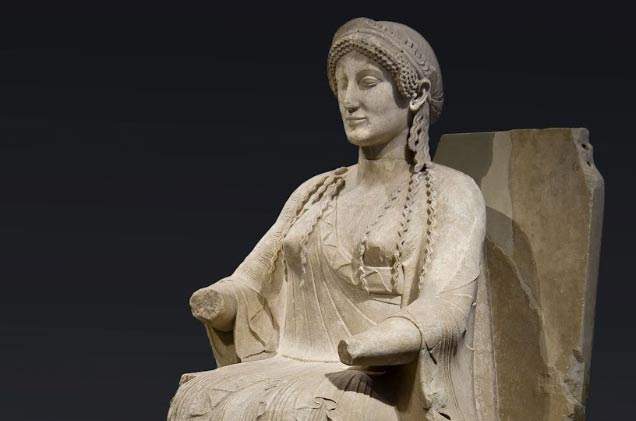Is it possible to return to Italy the Goddess of Taranto, a work preserved at theAltes Museum in Berlin after leaving our country in the 1910s? According to Senator Margherita Corrado (Cal Group), the answer is affirmative, and the circumstances are favored by the exchanges between Italy and Germany that, in April, allowed the return to our country of the Sienese biccherna attributed to Sano di Pietro, an important work from 1441 that had been illegally exported to Germany to be sold at auction. According to Corrado, this return “showed that it is possible to achieve full successes, when it comes to recovering cultural goods that have illegally left our country, ’even’ when dealing with German museums and collectors. We had been accustomed, until now, to unconditional surrenders or less-than-dignified compromises, such as the indefinite loan formula adopted, instead of restitution, for the ’German’ fragments of an extraordinary sarcophagus from Pianabella in Ostia and a Mithraic relief from Tor Cervara, both from the second century AD.”
The resolution of the biccherna affair, however, would mark a change of pace, and the senator is therefore pressing the Italian authorities to do their utmost to bring back the Goddess of Taranto as well (the issue, moreover, had already been raised in 1997, and Corrado recalled how the then minister Walter Veltroni let it be known that it was not possible to proceed with the recovery for diplomatic reasons).
The statue was discovered in 1911 by some workers who were working around the city for the construction of a palace, in a ditch where the work had been hidden in antiquity (while according to others it had been found a few years earlier, in 1905, by a farmer in a vineyard in Locri, Calabria, and later secretly transported to Taranto: it was another local farmer, a certain Giovanni Giovinazzo, who told of having witnessed the discovery). It depicts a goddess seated frontally on a richly decorated throne, looking straight ahead. Her feet, wearing a pair of sandals, are set on top of a footrest, while her arms are raised forward, although the statue lacks both hands. The right hand probably held a cup. The goddess wears a long-sleeved chiton, a himation (a kind of cape) draped diagonally and fastened with six fibulae over her right arm, and a veil covering her back and part of her arms. The hair, parted in the middle, is gathered in long braids. Above the head is a diadem, which in the past was adorned with metals. We do not know who the goddess depicted is, perhaps Persephone, Hera or Aphrodite.
It is an extremely valuable work since it is one of the few cult images from the 5th century BCE to have survived. However, the Goddess of Tarentum would remain very briefly in Italy: it came into the hands of the merchant Jacob Hirsch, who sold it to the Berlin Museums in 1916. The circumstances under which the work ended up outside the country’s borders have not been clarified, but there is a strong suspicion that the exit was illicit. “The fact that the two ’possible’ dates of the statue’s discovery (1905 and 1912) precede and follow Law 364/1909,” Corrado explains, “and yet the former is later than Law 185/1902, which never came into force, with the consequent, enduring extension of the provisions previously in place (already sanctioned by Law no. 286 of 1871), which denied the unauthorized export of objects of art and antiquities, opens up new scenarios, in which the political will to act or not to act for the purpose of recovering the work stolen from our cultural heritage becomes diriment, technical pretexts having fallen.”
The senator therefore asked Culture Minister Dario Franceschini to solicit an opinion on the case of the Taranto Goddess from the technical structures and offices of direct collaboration, including the General Command of the Carabinieri for the Protection of Cultural Heritage, but also, in a broader perspective broader perspective, to set up a working group made up of specialists capable of making our case in the case of at least dubious exits at a time when the regulations, even before 1909, recognized the unauthorized exit from the Kingdom “of things having historical, archaeological or artistic interest” as a permanent offense (i.e., excluding the statute of limitations), with provision for confiscation of the property wherever it is located. This is the measure taken by the Judicial Authority also for the famous Fano Athlete, which illegally left Italy and is still on display at the Getty Museum in Los Angeles, followed by the submission of the international rogatory for the execution of the confiscation in a foreign country.
 |
| Pressure to return to Italy the Taranto Goddess, which came out in the 1910s |
Warning: the translation into English of the original Italian article was created using automatic tools. We undertake to review all articles, but we do not guarantee the total absence of inaccuracies in the translation due to the program. You can find the original by clicking on the ITA button. If you find any mistake,please contact us.